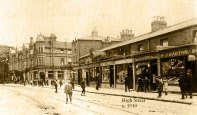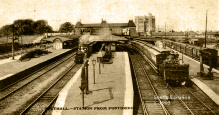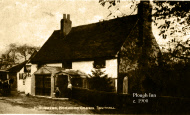Southall 830-
Richard J. Meads




Doctors
Southall has been served very well with its doctors. The earliest I can find are
Dr Parrot and Dr Fenn. These were in the district around 1870. Both used to drive
around in a small pony trap or arrive on horseback. In the 1890s came Dr MacDonald,
who set up practice in Denmark Road (King Street). He did his rounds on a three-
A Dr Hart came in 1906, three houses away. Again, a very qualified man, a Salvationist, a little eccentric; and still further on came Dr McKenna.
As the population increased so more doctors came. Many of the older residents have painful memories of treatment meted out by these doctors, when they had to have minor operations or limbs set, stitches put in, because of the primitive methods in use at that time. Doctors used to make up their own medicines.
I do not pretend that the doctors named now have come and gone in this order, but
here are those most remembered -
With their surgery in Osterley Park Road came Dr Brooks -
Dr Olive who, with her father, lived at 'Grove House', North Road. Both took a great interest in the Southall Horticultural Association.
A great change has come which has done away with the doctors being ‘on call’ night and day. This has come about by Group Practices. One of the first of these was started in Lady Margaret Road by Dr Ginsberg. Now there are better hospital facilities and home nursing visits.
Other doctors have been -
Mr T. Salter, MPS, FSMC, a chemist and pharmacist, had shops in the High Street and
Southall Green; and Boots the Chemist had shops in Southall 72 years -
There have been several nursing homes -
In the early 1950s Southall was a very industrial town with almost full employment.
There was a vast increase in motor traffic and traffic lights had been installed
at the High Street crossing and Western Road. There was still a great demand for
council houses and a large new estate was built on the left hand side of Havelock
Road. It was being built in 1953 and the roads are named after members of the successful
Mount Everest Expedition whose conquest to the summit was reported on the day of
Queen Elizabeth II's Coronation -
In June, 1950 Dr Charles Hill (the Radio Doctor) formally opened the new St John Ambulance Headquarters in Hartington Road. The hall belonged to St Johns Church but, after being used as a Borough Cafe, was purchased by the Brigade and, with a lot of voluntary work and a great deal of fund raising by the members, became the local Division's Headquarters. Most unfortunately, Supt Mr Jack Taylor, who had been the founder and backbone of the Men's Division, died in 1949.
More and more aircraft were to be seen and, of course, this was to get a deal worse due to the fact that about three miles away the new London Airport was being constructed. This was providing a great many jobs for local people.
In 1950 Hanwell Asylum became St Bernard's Hospital and a complex of single storey
wards were built on the Windmill Lane side. These were given names instead of numbers
-